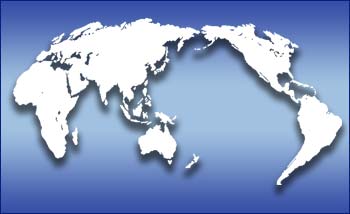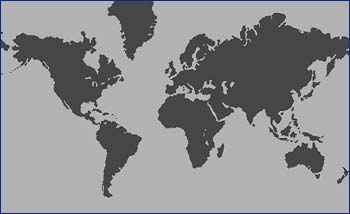THE FRANCHISE
High-level expertise
The railway industry is generally mature, with a substantial legacy of
long-lived assets. Notwithstanding that legacy, many stakeholders have
adapted to the aggressive Information-Age competition that nowadays characterizes
their environment: Many more still need to learn to adapt and cope by
exploiting the competitive strengths of the railway transport mode's genetic
technologies. Railway Corporate Strategy Close Corporation's intellectual
property franchise includes expertise in:
- Identifying, understanding, and resolving systemic dysfunction
within railways,
individually or in regional clusters, to establish a robust position
from which to adapt to contemporary and future challenges.
- Identifying, understanding, and leveraging the inherent competitiveness
of the railway genetic technologies, to support sustainable
alignment with external stakeholder expectations in a relevant
environment that is global in extent.
Target clientele
Railway Corporate Strategy CC seeks out involvement with stakeholders
in the global railway industry, who subscribe to its vision of free, effective,
and sustainable competition and cooperation with other transport modes
in the global logistics- and mobility settings, but who are still working
on formulating and realizing their vision. Its business focus and high-level
expertise targets a market niche in the upper echelons of railway industry
leadership. It works in the global railway industry with infrastructure-
and train operators; investors; customers of major railways; equipment
suppliers, original equipment manufacturers, and system integrators; consulting
houses; as well as institutional stakeholders, such as donors, government
at all levels, organized industry and organized labour.
Geographic reach
The contiguous continental land masses of the world, shown in the following
map [About the map], define the territorial
franchise of the global railway industry. Railway Corporate Strategy CC
is based in Pretoria, South Africa, and seeks to map its intellectual
property franchise internationally onto that railway territorial franchise.
About the map
Portraying a spherical surface on a flat one is geometrically challenging.
Mapmakers must inevitably compromise area, direction, distance, and shape.
The blue map is the Winkel Tripel projection, which shows the sizes of
land masses in proportion, while minimizing direction-, distance-, and
shape distortion. This example is centred on the Pacific Ocean, to emphasize
the contiguous juxtaposition of land masses that have potential to support
continental- and intercontinental railways. The Winkel Tripel projection
best portrays the domain in which the railways of the world take on their
competitors.

The grey map is the more familiar Mercator projection, which
originated with early voyages of discovery. It is a mariner's view of
the world, where oceans surround continents. A straight line between two
points represents a constant compass bearing, but areas, distances, and
shapes are distorted, more so toward the poles. The Mercator projection
is usually centred on Greenwich, which makes it difficult to visualize
the contiguous juxtaposition of the land masses that have potential to
support continental- and intercontinental railways.

Railway stakeholders who grasp the profound distinction
between these two map projections will visualize opportunities exploit
the competitive strengths of the railway genetic technologies. The relevance
to long haul, time sensitive, merchandise traffic in major trade corridors
should be self evident.
Use the contact page to explore issues
such as source competition and modal competition. Consider the potential
for rail transport to support logistics services in major trade corridors:
Revival of the Silk Route from China to Europe, the North East West corridor
from the Far East to North America, the North American Land Bridge, the
Transport Corridor Europe Caucasus Asia (TRACECA), the Trans-Asian Railway,
the north-south axis that emerged within railways of the North American
Free Trade Agreement, and the Trans European Rail Freight Freeways, to
mention some.
Return to Target clientele
|